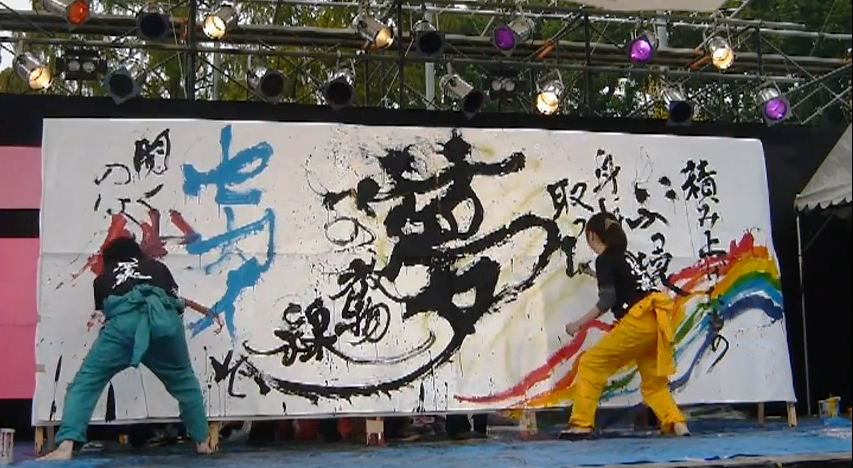Luckily, I have two CIPs, Kyoto University’s Amateur Dance Circle and Kyoto University’s Calligraphy Circle, and I love both of them.
I participated in the Kyoto University’s Amateur Dance Circle for the first half of the semester. This Amateur Dance Circle focuses on social dances, which I had no previous experiences of. Although I learned Chinese dance when I was young and I took dance lessons in college, it was difficult for me to remember step sequences in a fairly short time and dance on high heels. Taking the challenge, I practiced at home by learning basic steps on YouTube and I think I did much better later on. The best thing about this Amateur Dance Circle was that it provided a wonderful way to socialize with local Japanese students. While practicing in pairs, I got to know almost every member in the circle. After dancing, I usually stayed for lunch and talked to them about dances, Kyoto University, tourist attractions, and etc. I think lives of Kyoto University’s students are very enjoyable because they have such interesting circles.
It is a pity that during the latter half of the semester, the practice’s time for the Amateur Dance Circle shrank from three hours to only one hour, which is even less than my commute time. Instead, I joined the Kyoto University’s Calligraphy Circle. The practice in the Calligraphy Circle is very flexible, for I can write whatever I want for however long. I learned Chinese calligraphy before, so I was very interested in their differences. One thing I noticed is that Chinese usually write calligraphy on a table while standing or sitting on a chair, whereas Japanese write calligraphy on a low table or on the ground while doing seiza, which is challenging for me. My legs were usually numbed after the practice. But I appreciate that experience because now I can do seiza for much longer. Calligraphy is probably not an ideal CIP because calligraphy requires the person to be quiet, which makes it hard to socialize. However, it’s not a problem for Kyoto University’s Calligraphy Circle, because they have another activity room for meetings. I usually stay in that room before and after the practice. Circle members always took the initiative to talk to me when I came into the room and invited me to join them. Maybe because I am a junior and most of them are freshmen and sophomores, they use the polite speech form to me. I was confused which form I should use until I met a senior who talked to me in the short form. The experience of this kind of Japanese upperclassmen-underclassmen relationship is interesting and useful.
Based on my CIPs’ experiences, my advice for future KCJS students would be, your CIP should be something you are good at, and it should be easy to socialize.
Good Luck and Have Fun!

